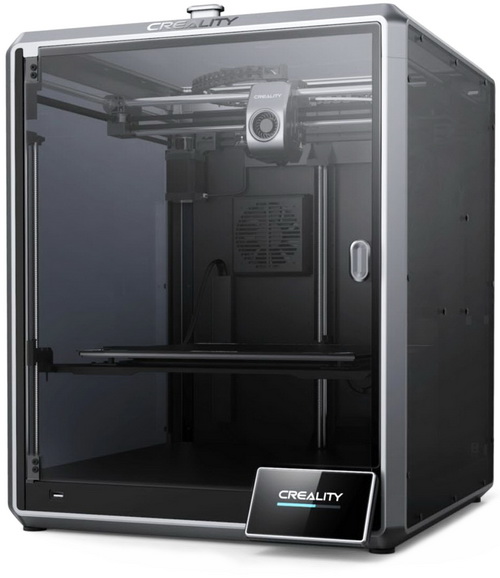INTRODUCTION

3D printing is clearly one of the most interesting technologies in the electronics industry today and with all the latest developments (some even announced in this year's CES) things will only improve significantly as time goes by. Yes, 3D printing is by no means perfect (printing bugs and limitations in regards to total printing surface, material and speed) but we are currently at a much better place compared to even 3-4 years ago in just about everything. For example, rather large, high-speed 3D printers for the consumer market are now coming out in numbers and one of the best in the around $1000/1000Euros category is no other than the K1 Max by Creality which I’ve been using for almost 3 weeks now.
Shenzhen Creality 3D Technology Co., Ltd., known as Creality, is a world-leading brand of consumer 3D printers. Since our establishment in 2014, we have embraced our role as an "3D Printing Evangelist" committed to the innovation, application, and popularization of 3D printing technology worldwide. Our forward-looking business strategy, termed "One Core with Two Wings," has propelled our rapid growth. Specifically, 3D printer products are at the “Core” of our business, which is assisted by the first “Wing” of ecosystem products like 3D scanners, laser engravers, filaments, and accessories. A second “Wing” of our business is Creality Cloud, an all-in-one 3D printing platform that gathers 3D models and enables a cloud printing experience.
The K1 line currently includes the K1 and the K1 Max which is obviously the top-end model of the line. Both of these FDM (Fused Deposition Modelling) 3D printers share quite a few things including a die cast aluminum enclosure with tempered glass panels, flexible and heated print plate, 4.3″ color touchscreen display, WiFi connectivity, CoreXY design, dual-gear direct drive, ventilation fan, USB 2.0 port, printing accuracy of 100±0.1mm, filament diameter of 1.75mm, print speeds up to 600mm/s and acceleration of up to 20000mm/s². What does change is build volume (220x220x250mm for the K1 and 300x300x300mm for the K1 Max), nozzle material (copper alloy for the K1 and hardened steel for the K1 Max), bed leveling type (hands free for the K1 and dual hands free for the K1 Max), RJ45 ethernet connectivity, power supply output (350W for the K1 and 1000W for the K1 Max), carbon air filter (for the ventilation fan) and extra components like an AI Camera and an AI LiDAR sensor (optional for the K1, standard for the K1 Max). So even though both models aren't light years apart the K1 Max does seem to deliver more and so let's see if that's really the case.

 O-Sense
O-Sense







.png)

